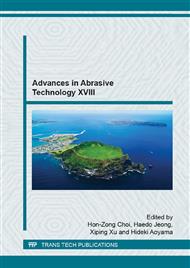p.394
p.400
p.406
p.412
p.418
p.423
p.430
p.435
p.440
High Efficiency EDM of PCD Utilizing a Specific Transition Metal Electrode
Abstract:
For the purpose of improving the electric discharge machinability of PCD, the authors have proposed a method using an electrode made of a specific transition metal which is easy to react with diamond. As a result, Ti, Nb, Ta, Mo, and W among various reactive metals brought very high efficiency, higher than 3 times of existing electrode materials (Cu, CuW) in the EDM of PCD. It was thought that the higher removal efficiency was due to the material properties such as mixing enthalpy between transition metal atom and carbon atom and a crystal structure of body centered cubic (bcc) lattice.
Info:
Periodical:
Pages:
418-422
Citation:
Online since:
January 2016
Authors:
Keywords:
Price:
Сopyright:
© 2016 Trans Tech Publications Ltd. All Rights Reserved
Share:
Citation:


